what bright star is next to the moon
When is the Next Full Moon?
The next full Moon will occur on Sat, April sixteenth 2:55 PM ET, and is known every bit the Pink Moon.
Acquire more than about this month'southward total Moon by watching our short video below:
Need more full Moon dates and times? Our calendar with full Moon dates, times, sociology, and names from the Farmers' Almanac tin can be found below for 2022 and 2023.
(Times listed are Eastern Standard or Eastern Daylight where appropriate.)
| Full Moon Calendar 2022 | ||
|---|---|---|
| Full Moon Engagement | Native American Name | Time of Full Moon |
| January 17th | Wolf Moon | 6:48 PM |
| February 16th | Snow Moon | 11:56 AM |
| March 18th | Worm Moon | iii:18 AM |
| April 16th | Pink Moon | 2:55 PM |
| May 16th | Flower Moon | 12:xiv AM |
| June 14th | Strawberry Moon | vii:52 AM |
| July 13th | Buck Moon | 2:38 PM |
| August 11th | Sturgeon Moon | 9:36 PM |
| September 10th | Harvest Moon | 5:59 AM |
| October 9th | Hunter's Moon | 4:55 PM |
| Nov 8th | Beaver Moon | six:02 AM |
| Dec 7th | Cold Moon | 11:08 PM |
| Full Moon Agenda 2023 | ||
|---|---|---|
| Full Moon Date | Native American Proper name | Time of Total Moon |
| January sixth | Wolf Moon | 6:08 PM |
| February fifth | Snow Moon | i:29 PM |
| March 7th | Worm Moon | vii:40 AM |
| April 6th | Pinkish Moon | 12:34 AM |
| May 5th | Flower Moon | 1:34 PM |
| June 3rd | Strawberry Moon | 11:42 PM |
| July 3rd | Buck Moon | 7:39 AM |
| Baronial 1st | Sturgeon Moon | ii:32 PM |
| September 29th | Harvest Moon | five:58 AM |
| October 28th | Hunter's Moon | 4:24 PM |
| November 27th | Beaver Moon | four:xvi AM |
| Dec 26th | Cold Moon | 7:33 PM |
Full Moon Names and Their Meanings
Full Moon names date back to Native Americans of North America. Tribes kept rail of the seasons past giving distinctive names to each recurring full Moon. Full Moon names were applied to the entire month in which each occurred.
There was some variation in the full Moon names, but in general, the same ones were consistent among regional tribes. European settlers followed that custom and created some of their own names.
Here is Farmers Almanac'southward list of the full Moon names.
Full Wolf Moon – January
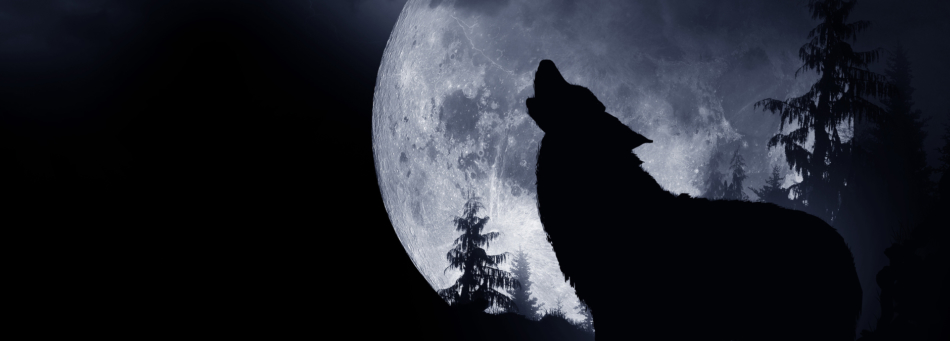
Amidst the common cold and deep snows of midwinter, the wolf packs howled hungrily exterior Indian villages. Thus, the name for January'due south full Moon.
Sometimes information technology was also referred to as the Old Moon, or the Moon After Yule. Some called it the Full Snow Moon, just most tribes applied that proper noun to the next Moon.
Full Snow Moon – February
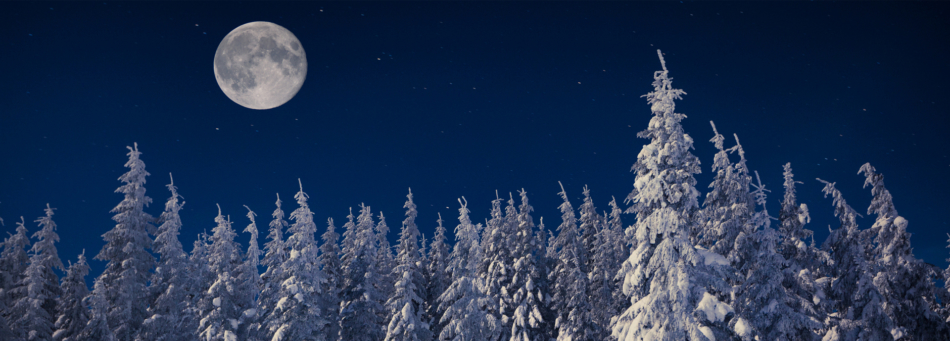
Since the heaviest snowfall usually falls during this month, native tribes of the north and due east most often chosen February'south total Moon the Full Snow Moon. Some tribes besides referred to this Moon equally the Full Hunger Moon, since harsh weather conditions in their areas made hunting very hard.
Full Worm Moon – March
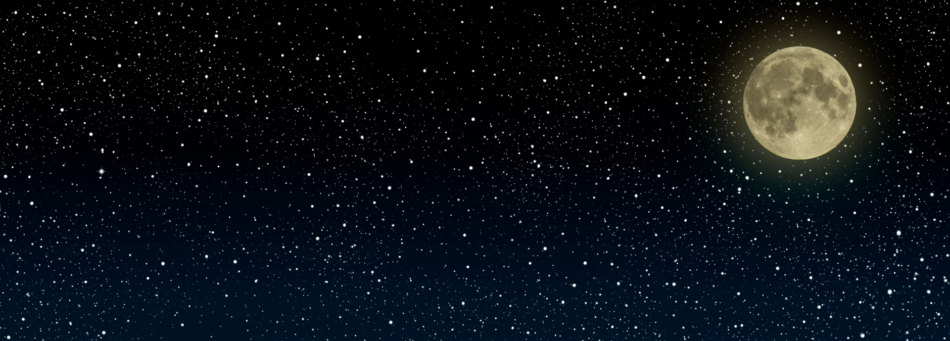
Equally the temperature begins to warm and the ground begins to thaw, earthworm casts announced, heralding the return of the robins. The more than northern tribes knew this Moon every bit the Total Crow Moon, when the cawing of crows signaled the end of winter; or the Full Chaff Moon, considering the snow cover becomes crusted from thawing past day and freezing at night.
The Total Sap Moon, marking the time of tapping maple copse, is another variation. To the settlers, it was also known as the Lenten Moon, and was considered to be the last total Moon of winter.
Total Pink Moon – April

This name came from the herb moss pink, or wild ground phlox, which is one of the earliest widespread flowers of the bound. Other names for this month'south celestial torso include the Full Sprouting Grass Moon, the Egg Moon, and among littoral tribes the Full Fish Moon, because this was the time that the shad swam upstream to spawn.
Full Bloom Moon – May
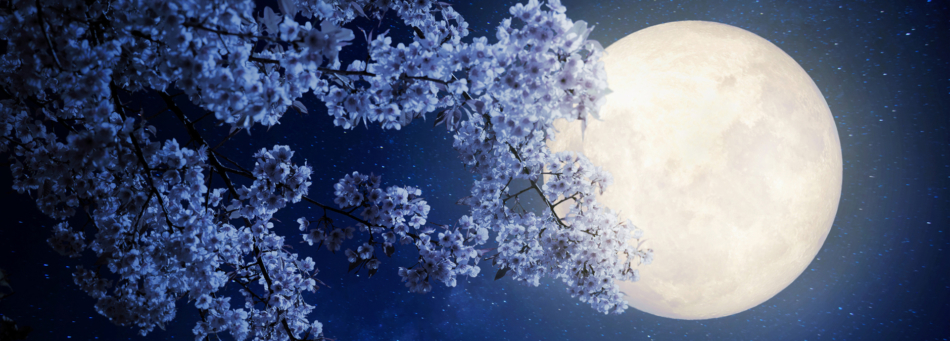
In most areas, flowers are abundant everywhere during this fourth dimension. Thus, the name of this Moon. Other names include the Full Corn Planting Moon, or the Milk Moon.
Full Strawberry Moon – June

This name was universal to every Algonquin tribe. However, in Europe they called it the Rose Moon. Also because the relatively short flavour for harvesting strawberries comes each year during the month of June . . . so the total Moon that occurs during that month was christened for the strawberry!
The Total Buck Moon – July
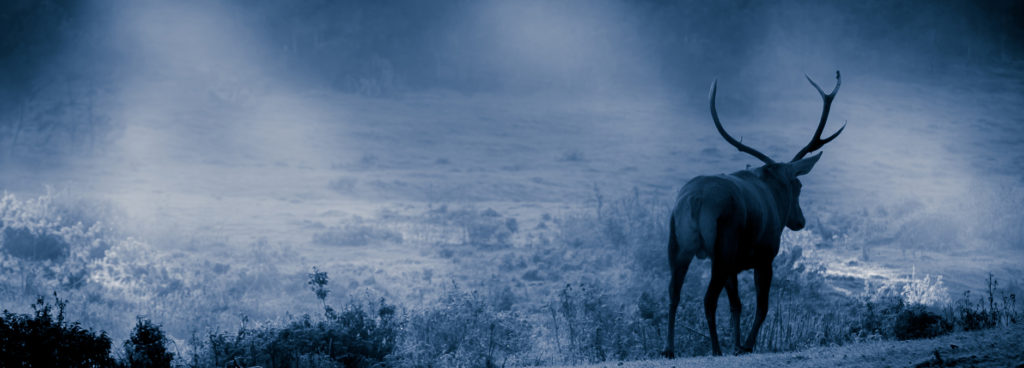
July is normally the month when the new antlers of buck deer push out of their foreheads in coatings of velvety fur. It was also often chosen the Total Thunder Moon, for the reason that thunderstorms are most frequent during this time. Another name for this month'due south Moon was the Full Hay Moon.
Full Sturgeon Moon – August

The fishing tribes are given credit for the naming of this Moon, since sturgeon, a large fish of the Great Lakes and other major bodies of water, were nigh readily caught during this month. A few tribes knew it as the Total Red Moon considering, equally the Moon rises, information technology appears reddish through any sultry haze. Information technology was also called the Green Corn Moon or Grain Moon.
Full Corn Moon or Total Harvest Moon – September
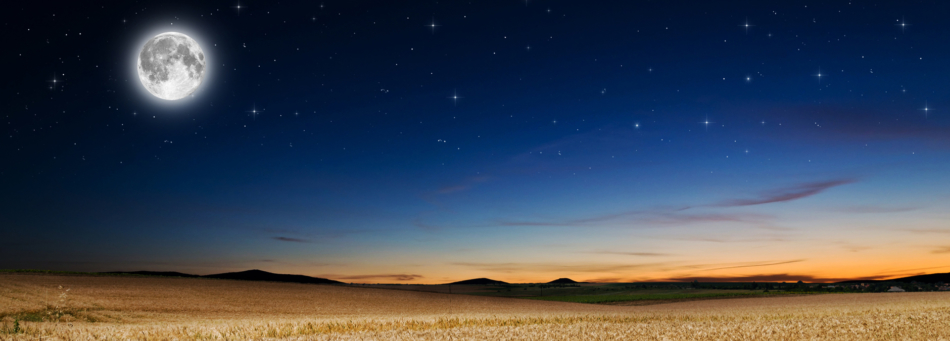
This full Moon name is attributed to Native Americans considering it marked when corn was supposed to be harvested. Most oft, the September total Moon is actually the Harvest Moon, which is the full Moon that occurs closest to the fall equinox.
In 2 years out of three, the Harvest Moon comes in September, but in some years it occurs in October. At the peak of harvest, farmers tin work late into the night by the light of this Moon.
Usually the full Moon rises an average of fifty minutes after each night, simply for the few nights around the Harvest Moon, the Moon seems to rise at near the same fourth dimension each night: merely 25 to thirty minutes later on across the U.Due south., and just 10 to 20 minutes later for much of Canada and Europe.
Corn, pumpkins, squash, beans, and wild rice the principal Indian staples are now ready for gathering.
Full Hunter's Moon or Total Harvest Moon – October
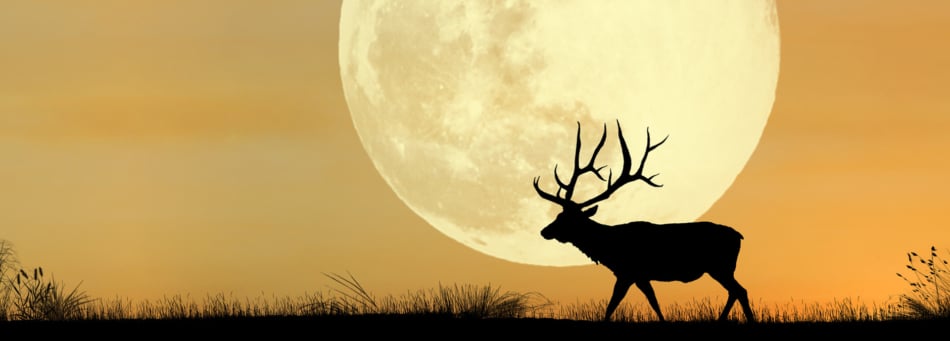
This full Moon is often referred to equally the Full Hunter'due south Moon, Blood Moon, or Sanguine Moon. Many moons ago, Native Americans named this bright Moon for obvious reasons. The leaves are falling from copse, the deer are fattened, and information technology's fourth dimension to brainstorm storing up meat for the long winter ahead.
Because the fields were traditionally reaped in late September or early on October, hunters could hands encounter play tricks and other animals that come out to glean from the fallen grains. Probably considering of the threat of winter looming close, the Hunter's Moon is generally accorded with special honour, historically serving as an important feast mean solar day in both Western Europe and amongst many Native American tribes.
Full Beaver Moon – November
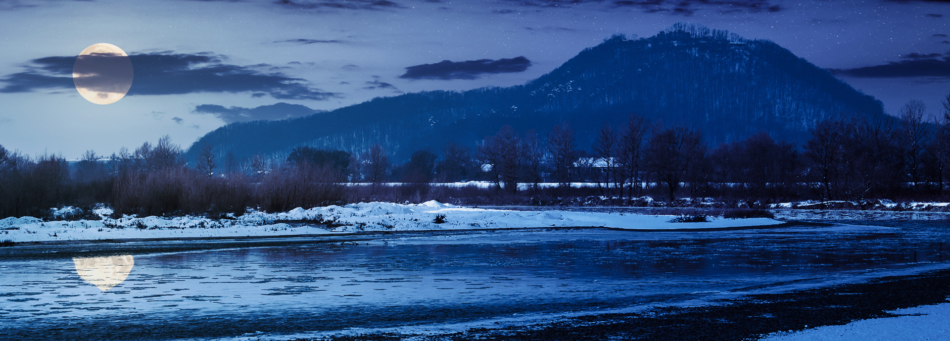
This was the time to set beaver traps before the swamps froze, to ensure a supply of warm winter furs. Another interpretation suggests that the name Full Beaver Moon comes from the fact that the beavers are at present actively preparing for winter. Information technology is sometimes besides referred to as the Frosty Moon.
The Total Cold Moon; or the Full Long Night'southward Moon – December
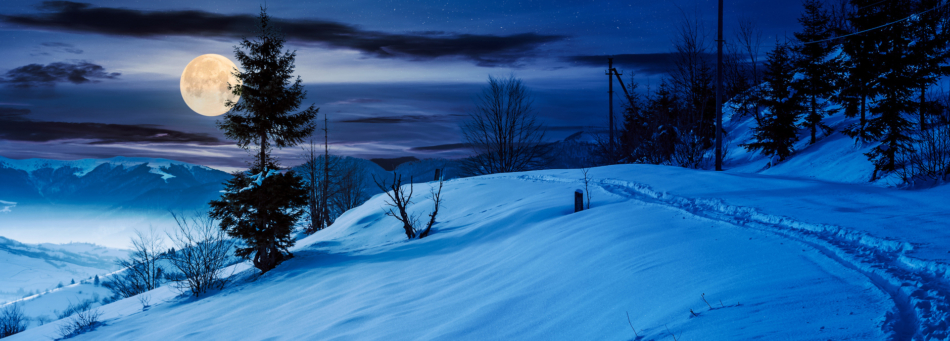
During this month the winter cold fastens its grip, and nights are at their longest and darkest. It is besides sometimes chosen the Moon before Yule.
The term Long Night'southward Moon is a doubly appropriate name because the midwinter nighttime is indeed long, and because the Moon is higher up the horizon for a long fourth dimension. The midwinter full Moon has a high trajectory across the sky because it is contrary a low Sun.
Want to Larn More Nigh the Moon & Astronomy?
- Moon Phase Calendar for upcoming full Moons, new Moons, and more!
- Astronomy news including a monthly Stargazers Guide and planet sightings
Call back, the Farmers' Almanac in print also has more information on upcoming best times to view Solar and Lunar eclipses, the planets, meteor showers, and more than. Gild your copy today!
heidenreichates1941.blogspot.com
Source: https://www.farmersalmanac.com/full-moon-dates-and-times
0 Response to "what bright star is next to the moon"
Post a Comment